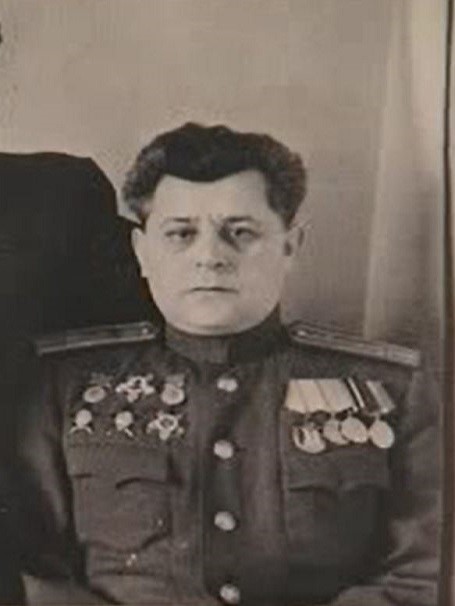Lev Gorlitskii was born in 1906 in the village of Stepantsi, southeast of Kiev. His father Yisrael was a technician at a local sugar mill, while his mother was a homemaker. The family was religious; his father did not work on Saturdays. In his early childhood, Gorlitskii studied at a cheder, and then at a Russian school, which he was forced to quit in 1919. The Revolution of 1917 and the Civil War of 1918-20 led to bloody pogroms in Stepantsi and its vicinity. The local Jews were initially attacked by Petliura's Ukrainian nationalist army, and this was followed by even more brutal assaults by Denikin's White Russian army. Lev's father was killed in the latter pogroms. In 1920, the fourteen-year-old Lev Gorlitskii joined a Jewish self-defense battalion in the town of Bohuslav south of Kiev. This unit was officially recognized by the Bolshevik (Soviet) authorities. In late 1920, the family settled in Kiev.
In Kiev, Gorlitskii entered a vocational school for crafts. After finishing it, he worked as a draftsman at a design office. In 1927, he enrolled in the Kiev Polytechnical Institute (technical university). In 1929, he, along with thirty other students, was transferred to the Military Mechanical Institute in Leningrad (present-day St. Petersburg). For Lev, this transfer was officially considered military recruitment. In 1932, Gorlitskii graduated from the Institute; his diploma project was a new mountain cannon. In 1939, the engineer Gorlitskii was arrested on accusations that his mountain cannon had performed poorly in the Spanish Civil War and in the Transcaucasian Military District. After a year in prison, Lev was acquitted, released, and promoted to the rank of head of the artillery design department of the Kirovsky plant in Leningrad, one of the preeminent military factories of the Soviet Union.
In June 1941, the Soviet-German War broke out, and in October that year the artillery design department of the Kirovsky plant was evacuated to Sverdlovsk (present-day Yekaterinburg) in the Urals. At Uralmash (the Ural Machine-Building Plant), Gorlitskii's specialty was designing self-propelled cannons. From 1943 on, Gorlitskii was deputy chief constructor of self-propelled artillery pieces, later being promoted to chief constructor. Among other projects, he designed the self-propelled cannons SAU-122, SAU-85, SAU-100, etc.; he also improved the design of the renowned Soviet T-34 tank. Gorlitskii spent two months at the frontline, to observe the performance of his machines in the field.
Gorlitskii's highest rank, in 1945, was that of colonel-engineer. In the course of the war, he was awarded four orders, including the non-military Order of the Badge of Honor, and a number of medals.
After the war, Gorlitskii continued his work at Uralmash. During the Stalinist anti-Jewish campaign of 1948-53, the authorities made several attempts to dismiss him from his engineering job – or, at least, to have him demoted to a lower administrative post. In 1953, after Stalin's death, Gorlitskii returned to the Kirovsky plant in Leningrad, where he became the plant's general constructor. He retired in 1976.
Lev Gorlitskii died in 2003.







